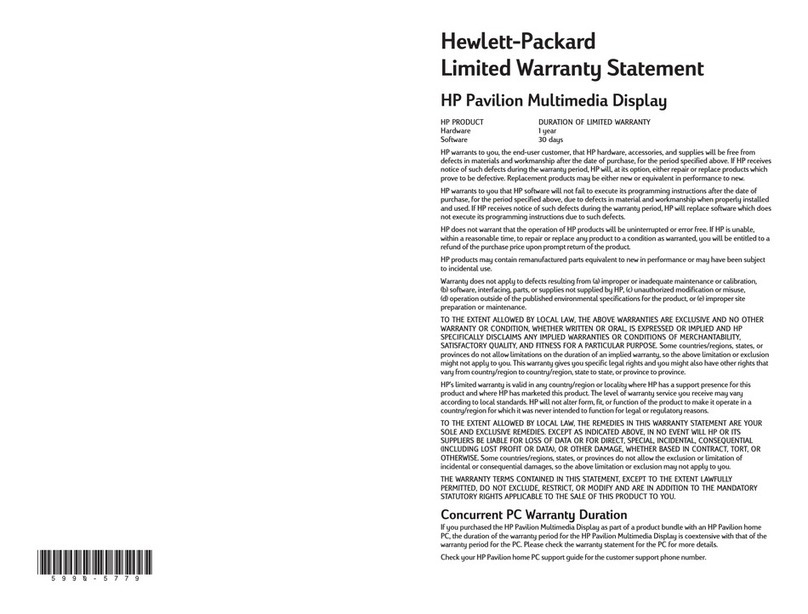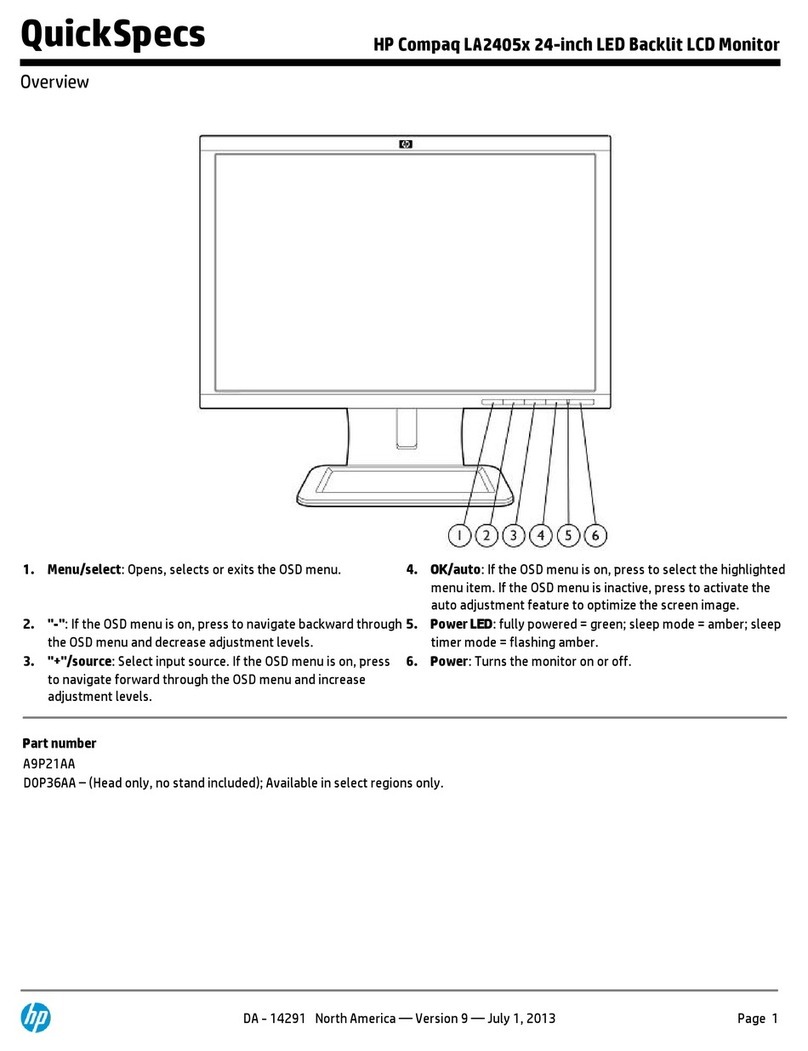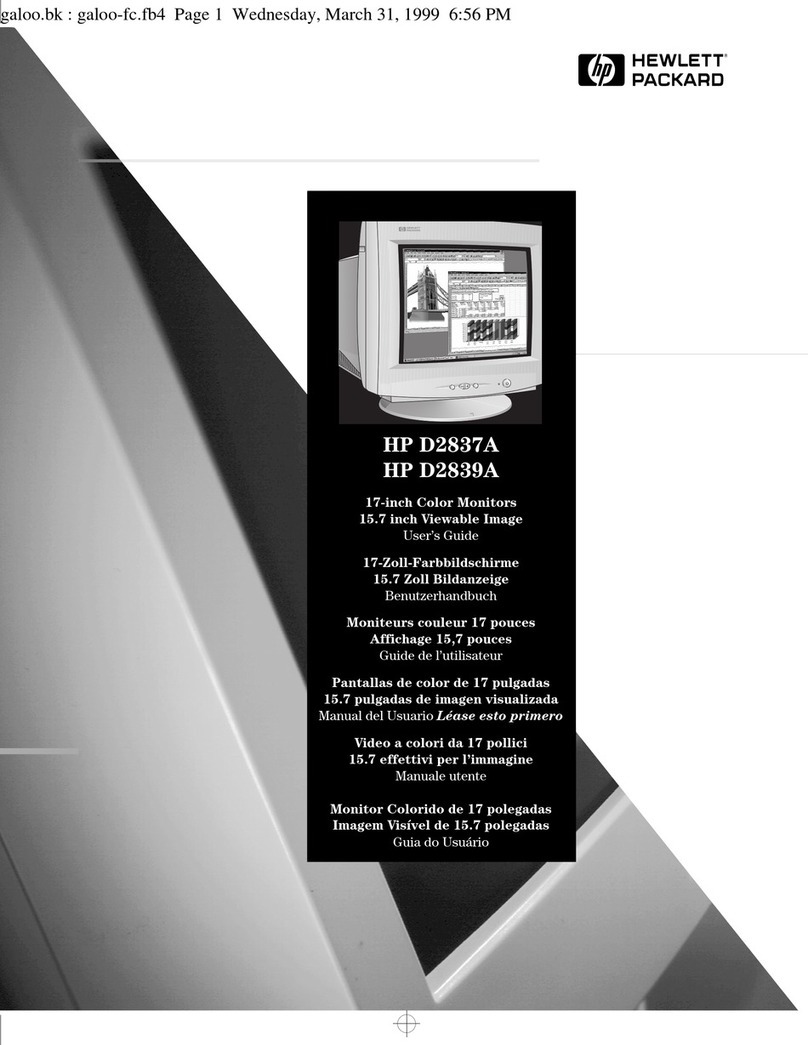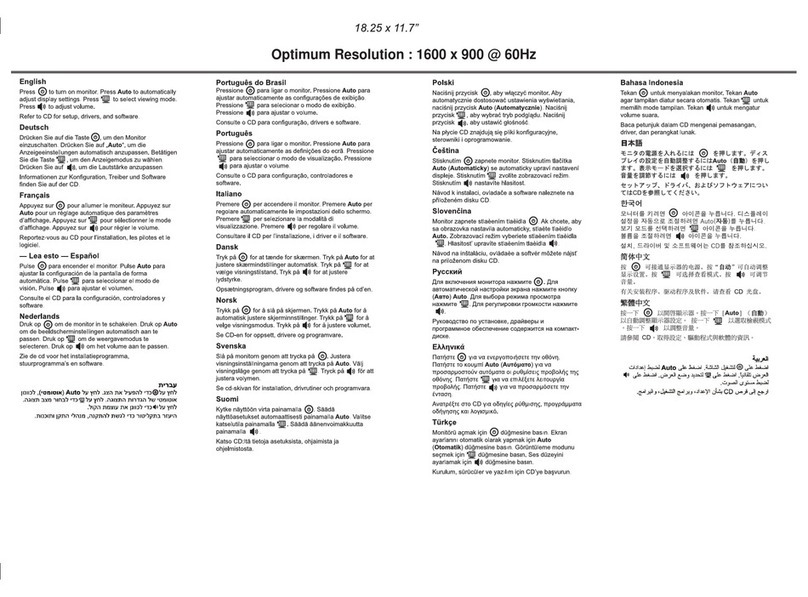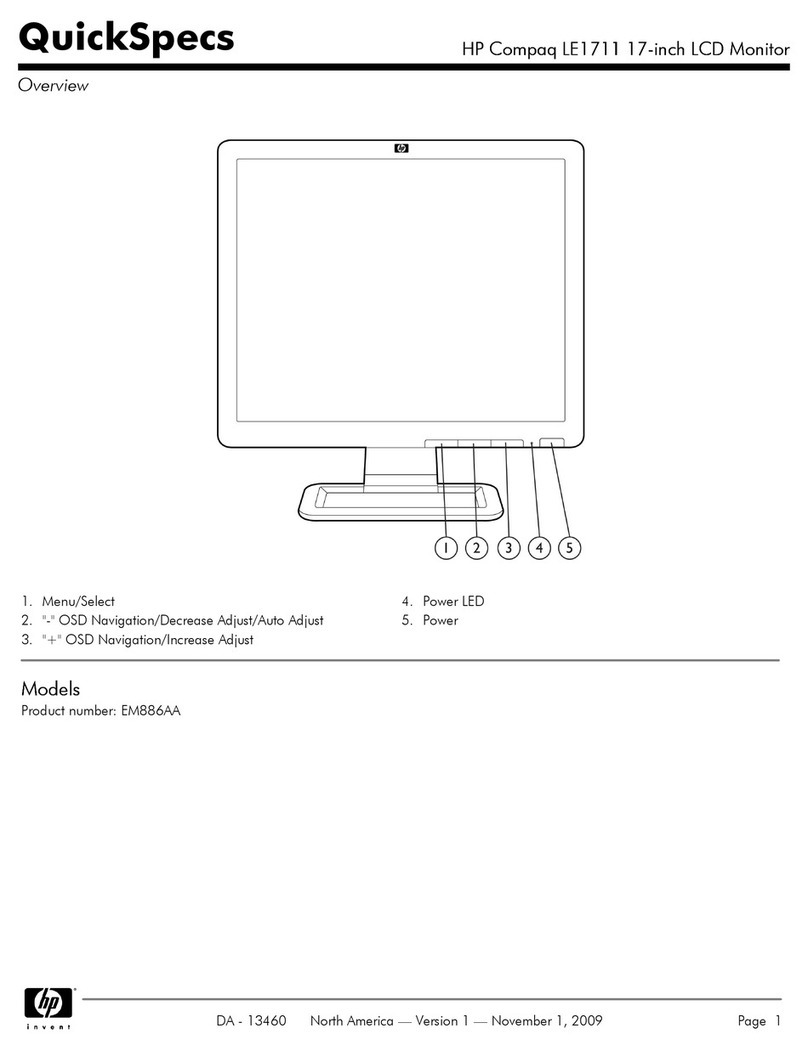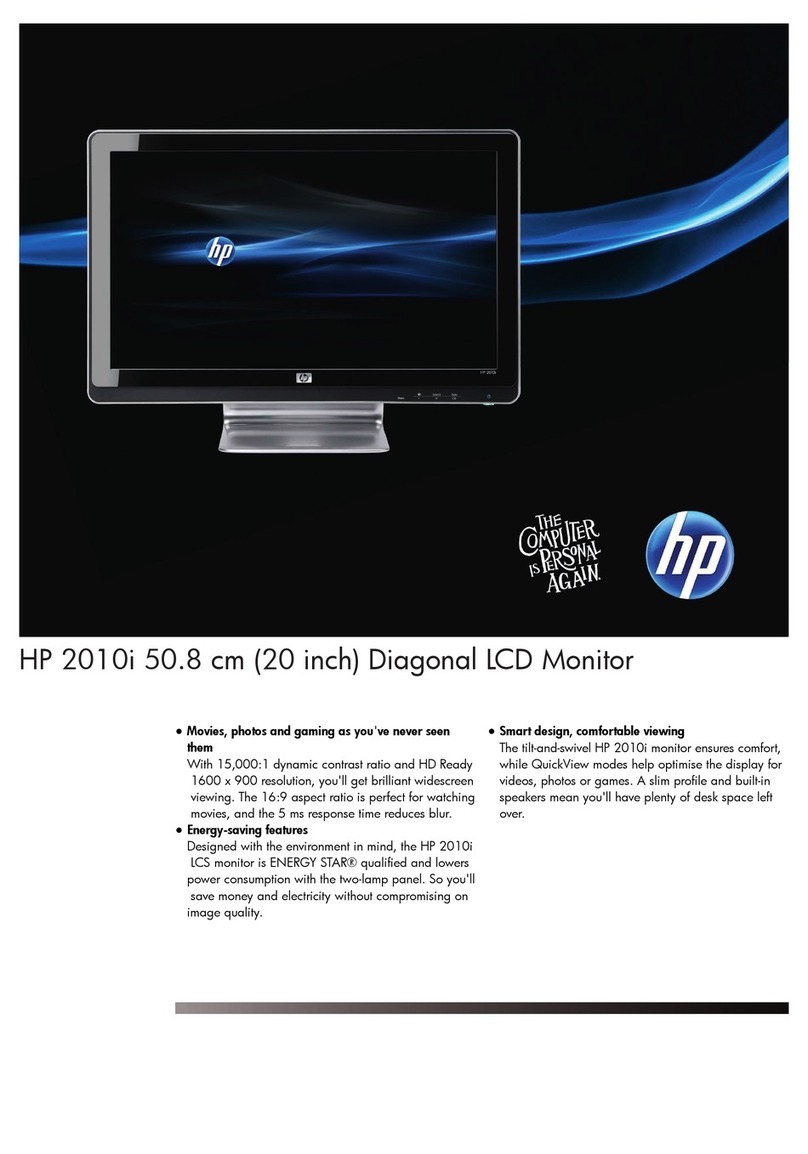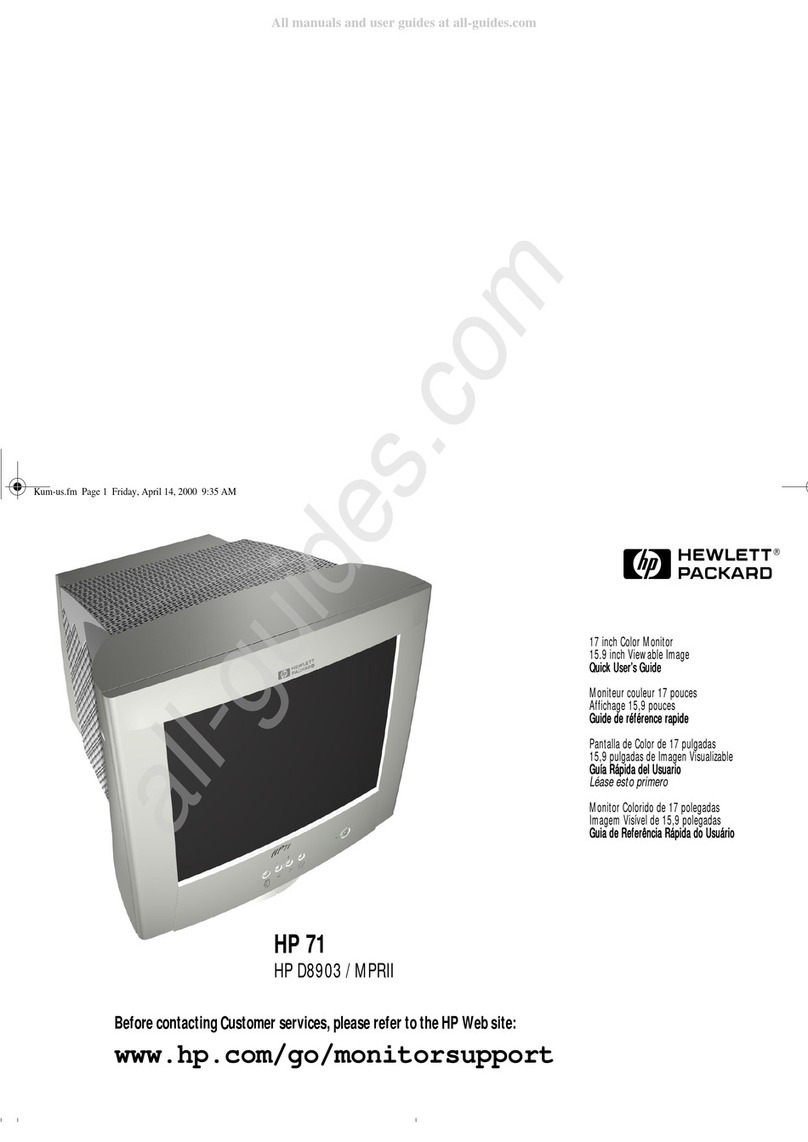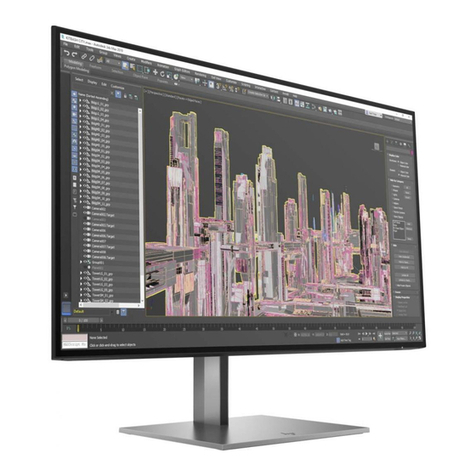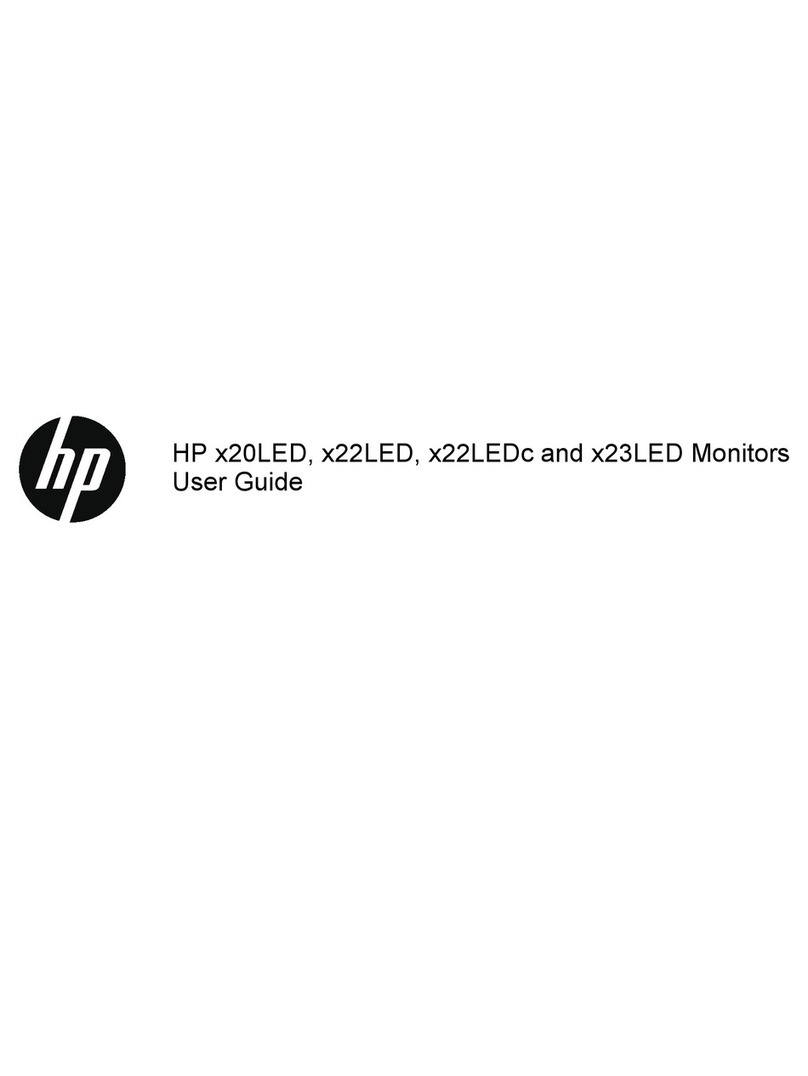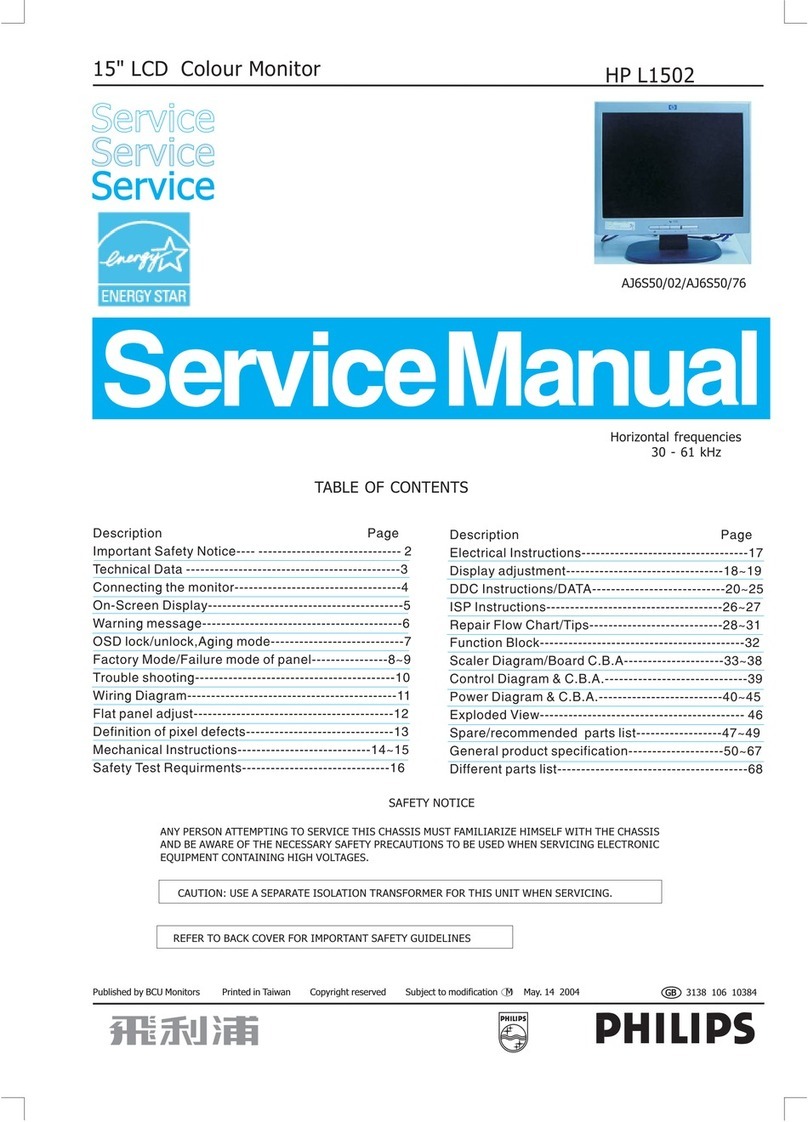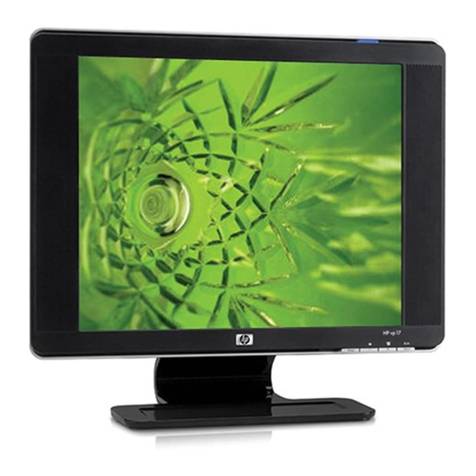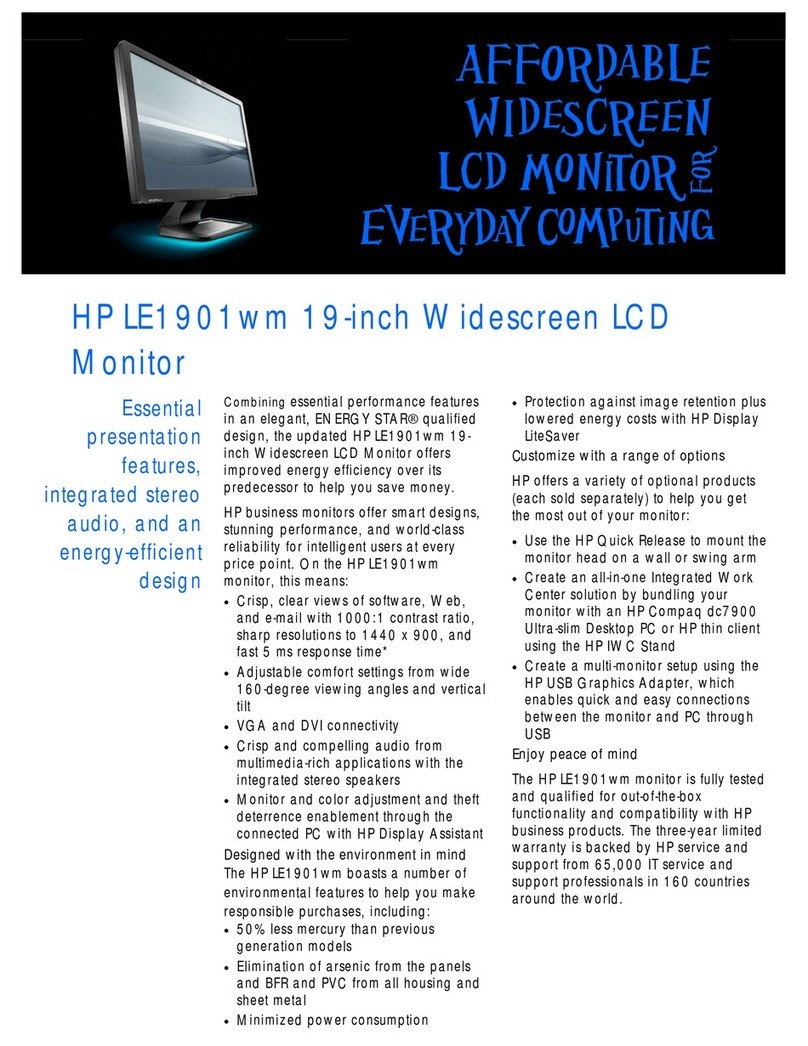
Model 1349A/D
SECTION
I
GENERAL INFORMATION
General Information
1-1. INTRODUCTION.
1-2. This Operating and Service Manual contains
informationrequired to install,operate,test,adjust,and
service the HP Model 1349A/D Digital Display.
1-3. Listed on the title page of this manual is a
microfiche part number. This number can be used to
order 4x6-inchmicrofilmtransparencies of themanual.
Each microfiche contains up to 96 photo-duplicates of
themanual pages.Themicrofichepackagealsoincludes
the latest Manual Changes supplement.
1-4. SPECIFICATIONS.
1-5. Instrument specifications are listed in table 1-1.
These specifications are the performance standards or
limits againstwhich the instrument is tested.Table 1-2
lists 1349A/D functions. Supplemental characteristics
are listed in table 1-3and arenot specificationsbut are
typical characteristics included as additional informa-
tion for the user.
1-6. SAFETY CONSIDERATIONS.
To prevent personal injury, observe all
safety precautions and warnings stated on
the instrument and in this manual.
1-7. Thisproduct isa SafetyClass 1instrument.Review
the instrument and manual for safety markings and
instructions before operation.Specific warnings,cautions
and instructions are placed wherever applicable. Refer
tothe SafetySummaryin thefrontof thismanualandto
Sections 11, V, and VIII for further safety precautions.
Theseprecautions must be observed duringallphases of
operation,service,andrepair of thisinstrument.Failure
to comply with these precautions or with specific
warnings elsewhere in this manual violates safety
standard of design, manufacture, and intended use of
this instrument. Hewlett-Packard assumes no liability
for the customer's failure to comply with these
requirements.
1-8. INSTRUMENTS COVERED BY MANUAL.
1-9. Attached to the instrument is a serialnumber tag.
Theserialnumberisintheform:0000A00000.Itisin two
parts; the first four digits and the letter are the serial
prefix, andthelastfivedigits arethesuffix.Theprefix is
the same for all identical instruments. The suffix,
however, is assigned sequentially and is different for
each instrument. The contents of this manual apply to
instruments with the serial number prefix(es) listed
under SERIAL NUMBERS on the title page.
1-10. An instrument manufactured after the printing
of this manual may have a serial number prefix that is
not listed on the title page. This unlisted serial number
prefix indicates that the instrument is different from
those described in this manual. The manual for this
newerinstrumentisaccompanied by a Manual Changes
supplement. This supplementcontains "change inform-
ation" that explains how to adapt the manual to the
newer instrument.
1-11. In addition to change information, the supple-
ment may contain information for correcting errors in
the manual. The supplement for this manual is
identified with the manual print dateandpart number,
both of which appear on the manual title page.
1-12. For information concerning a serial number
prefix thatis not listed onthetitlepage orintheManual
Changes supplement, contact your nearest Hewlett-
Packard office.
Scans by ArtekMedia © 2007
